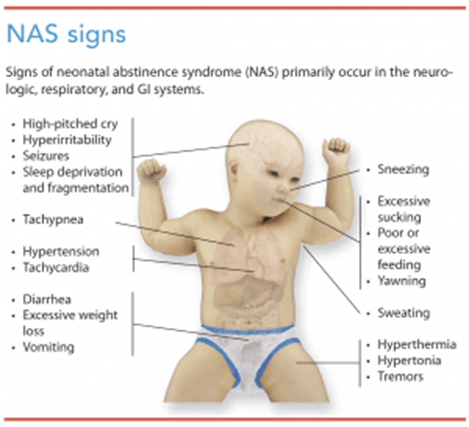A nurse is caring for a client who is at 37 weeks of gestation and is being tested for group B streptococcus B-hemolytic (GBS). The client is multigravida and multipara with no history of GBS. She asks the nurse why the test was not conducted earlier in her pregnancy. Which of the following is an appropriate response by the nurse?
"You didn't report any symptoms of GBS during your pregnancy."
"Your previous deliveries were all negative for GBS."
"There was no indication of GBS in your earlier prenatal testing."
"We need to know if you are positive for GBS at the time of delivery."
The Correct Answer is D
Explanation
Choice A Reason:
"You didn't report any symptoms of GBS during your pregnancy." This response is incorrect because GBS infection in pregnant women often does not present with noticeable symptoms. Additionally, GBS screening is not based on symptoms but rather on the presence of the bacteria in the genital or gastrointestinal tract.
Choice B Reason:
"Your previous deliveries were all negative for GBS." This response is incorrect because GBS status can change between pregnancies. A negative result in previous pregnancies does not guarantee a negative result in subsequent pregnancies. Screening closer to the delivery date is necessary to determine the current GBS status.
Choice C Reason:
"There was no indication of GBS in your earlier prenatal testing." This response is incorrect because routine prenatal testing typically does not include GBS screening unless there are specific risk factors or symptoms present. GBS screening is specifically done closer to delivery to determine colonization status at that time.
Choice D Reason:
"We need to know if you are positive for GBS at the time of delivery." This response is appropriate. Group B streptococcus (GBS) screening is typically performed around the 35th to 37th week of pregnancy because colonization status can change over time. A negative result earlier in the pregnancy does not necessarily mean that the client will remain negative at the time of delivery. Therefore, it is essential to screen closer to delivery to determine if the client is colonized with GBS and if prophylactic measures are needed to reduce the risk of transmission to the newborn during labor and delivery.
Nursing Test Bank
Naxlex Comprehensive Predictor Exams
Related Questions
Correct Answer is A,B,C,E,D
Explanation
Choice A Reason:
Instruct the client to empty their bladder: Emptying the bladder before the examination allows for better visualization and palpation of the uterus and fetal parts. A full bladder can interfere with the ability to assess the position, presentation, and engagement of the fetus accurately.
Choice B Reason:
Position the client supine with knees flexed and place a small, rolled towel under one of their hips: Positioning the client supine with knees flexed helps relax the abdominal muscles and provides better access to the uterus for palpation. Placing a small, rolled towel under one hip helps tilt the pelvis slightly, which can improve visualization and palpation of the uterine fundus.
Choice C Reason:
Palpate the fetal part positioned above the symphysis pubis: Palpating the fetal part above the symphysis pubis (typically the fetal head) allows the healthcare provider to determine the presenting part, engagement, and degree of descent of the fetus. This step provides valuable information about the fetal position and presentation.
Choice E Reason:
Palpate the fetal parts along both sides of the uterus: Palpating the fetal parts along both sides of the uterus helps the healthcare provider identify the fetal back and limbs. This step provides further confirmation of the fetal position and presentation and helps assess fetal lie and attitude.
Choice D Reason:
Palpate the fetal part positioned in the fundus: Palpating the fetal part in the fundus (typically the buttocks or head) confirms the findings from the previous steps and helps determine the presenting part and its relationship to the maternal pelvis. This step provides additional information about the fetal position, presentation, and engagement, which is crucial for assessing fetal well-being and planning for labor and delivery.
Correct Answer is D
Explanation
Explanation
Choice A Reason:
Placing the infant on his back with legs extended is a recommended sleeping position for infants to reduce the risk of sudden infant death syndrome (SIDS). However, it is not directly related to managing neonatal abstinence syndrome.
Choice B Reason:
Providing a stimulating environment would not be appropriate for an infant with NAS, as excessive stimulation can exacerbate symptoms such as irritability and tremors. A calm and quiet environment is preferable.
Choice C Reason:
Monitoring blood glucose levels every hour is not a routine practice for managing neonatal abstinence syndrome. While NAS can cause feeding difficulties, hypoglycemia is not typically a primary concern unless the infant is exhibiting specific symptoms.
Choice D Reason:
Initiating seizure precautions is important when caring for an infant with NAS because seizures can be a complication of withdrawal. Seizure precautions may include padding the crib, ensuring a safe environment, and being vigilant for signs of seizure activity.

Whether you are a student looking to ace your exams or a practicing nurse seeking to enhance your expertise , our nursing education contents will empower you with the confidence and competence to make a difference in the lives of patients and become a respected leader in the healthcare field.
Visit Naxlex, invest in your future and unlock endless possibilities with our unparalleled nursing education contents today
Report Wrong Answer on the Current Question
Do you disagree with the answer? If yes, what is your expected answer? Explain.
Kindly be descriptive with the issue you are facing.
